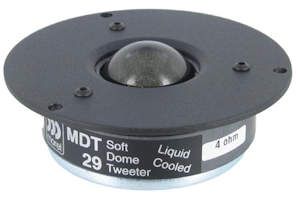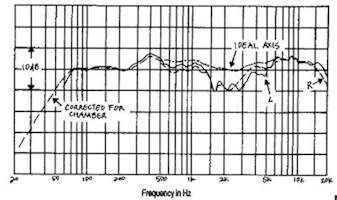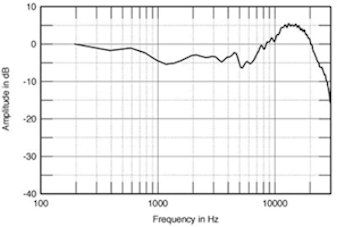Originally sent to members of Richmond (VA) Audio Society.
Well, after weeks of fiddling, I think I’ve got the Spica TC-50s sounding like I want them. The following will probably be of interest only to the Spica owners in the club- Steve and Sunil, I think- if it is of interest to anyone at all. On the other hand, I’ve learned a lot that others might find useful. Thanks go to Tim in Richmond, and to Matt in New Zealand, both veteran speaker builders with electrical engineering backgrounds, for their very generous guidance and answers to my many questions
My goal was to preserve the amazing imaging that the TC-50s are known for, while improving their treble sweetness and power handling. The stock Polydax are notorious for being easily blown, and were grainy compared to what I’ve become accustomed- the sweet, smooth treble of the Harbeth 30.2s, the Magnepan 1.7s, and various Dyanaudios. The stock speakers are also a little bright, especially if the ear is not precisely on the “ideal axis”- midway between the tweeter and the woofer. For a standing listener, they are very bright, a phenomenon that likely explains the disparity between the Tony Cordesman and J Gordon Holt when they reviewed the TC50 in 1983.
I wanted to stick with 4 Ohm (nominally) tweeters, as I don’t have the knowledge or soldering skills to rework the crossover. My first substitute was a Dayton Audio rs28f-4 that I had on hand, but its low Fs (free air resonance) of 545Hz was not a good match. The notch filter in the Spica’s crossover is tuned for a Fs of ~1000Hz. My understanding is that the bump in impedance at the Fs needs to be compensated for at the correct frequency by the notch filter.
If there is a mismatch, this skews the impedance seen by the crossover, which in turn messes up the frequency and phase response of the entire speaker (and the time coherence?). This is apparently true even though the Fs of the tweeter is well below the crossover point. Tim convinced me that this was important, even when I didn’t (and still don’t entirely) understand it. The audible result was a strange whistling quality on high strings.
The Morel SB 26STAC-C000-4 tweeter was better, but the Fs was still a little off at 750Hz. The Audax TW025A2 tweeter that Madisound sells as a “direct replacement” for the original Polydax has ~ the same Fs, 1090 Hz, as the original, but is no more robust than the original, is more efficient, making it even brighter in the Spica, shares the original’s rise in the 5-10KHz range, and was still more grainy than I’d like.
All of these tweeters needed some padding down, and I bought a bunch of fixed resistors to make L-pads for 1, 2, 2.5, and 3 db attenuation. Experimenting with these was a pain in the ass, as repeated insertion and removal of the tweeters mucked up the screw holes in the relatively soft MDF, and the sloped cabinet full of wool leaves very little room behind the tweeter. This made alligator clips unusable- they kept coming undone- and the leads on the resistors were usually too short to wire mechanically directly across the terminals. I finally decided to install a variable L-pad. The only 4 Ohm L-Pad I could find came from Willys HiFi Great Brittan.
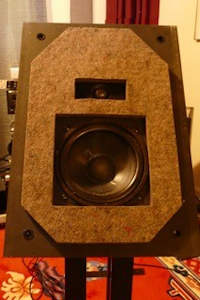
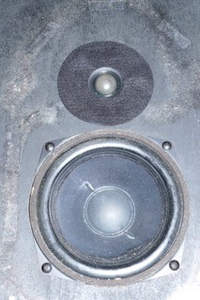
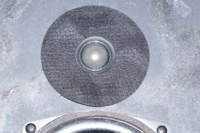
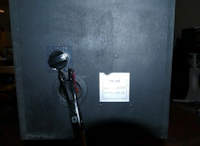
Purists may cringe at this solution, but the components in the crossover are not all that high quality to begin with. The variable L-pad sure made experimentation a lot easier, and allows precise level setting where you want it.
Finally, this Morel MDT29-4 Tweeter, which was developed as a replacement for the KEF T-33A seems to be the solution I was after.
It has a Fs of 1000Hz, has higher power handling than the Audax, is smooth and sweet, and with the variable L-pad is easily adjustable. The flange is slightly smaller than the original. but still allows the screw holes to find purchase. I filled in the groove around the flange with Caulk and Seal, which was on hand from an old AR-1 rebuild. I used a bit more of this to seal the openings for the L-pads on the backs of the cabinets. I have some left if anyone needs some. For good measure I added these Felt Defraction Damping Rings which fit perfectly around the tweeter’s dome and under the Spica’s big felt damper.
Pre-Mod Response Curve:
Here is Stereophile’s measurement of the Spica TC-50 from 1988 , using their admittedly much more sophisticated procedure, at or near the ideal axis:
...and for a standing listener:
Post-Mod Response Curve:
In contrast, here is the response with the Morel, adjusted as I prefer it, at least initially, as measured with a Behringer RTA and its calibrated microphone, on the “ideal” axis, with my venerable Infinity Servo Subwoofer set at 60Hz:

On Axis Response
And here is the response with the mic at 1 meter and 72” above the floor; i.e., as a standing listener would hear; a slight, but much more tolerable brightness.

Standing Response (measured at 72")
I’ve no doubt spent much more time, of which I have plenty, and money, of which I don’t, on this project than it deserves, but man do they image, and are non-fatiguing and sweet to these ears.
Happy listening!


